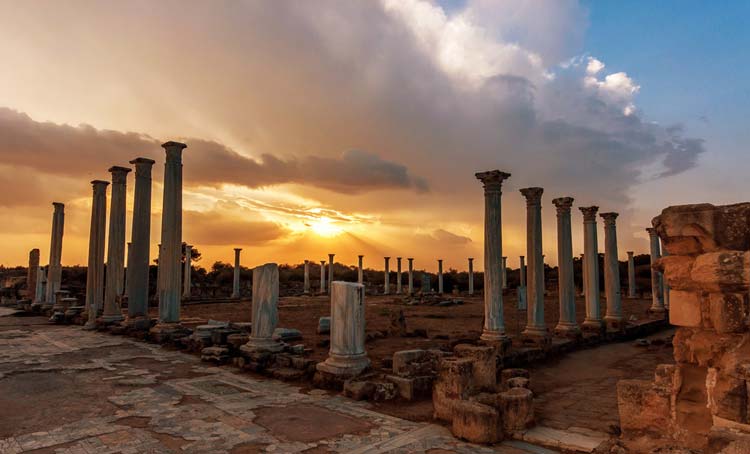The most important archaeological site on Cyprus.
The ancient city-kingdom of Salamis is the most important archaeological site on Cyprus and was for years the leading city on ancient Cyprus. Founded ca 1180BC by the Trojan War hero Teucer exiled by his father from the Greek island of Salamis.

The largest and most important ancient site on Cyprus, Salamis is one of the island’s major attractions. Sea trade brought it prosperity and by the 8th century it was the greatest of the ten city-kingdoms on Cyprus. Over the centuries it served several masters including the Persians until their defeat by Alexander the Great. Later, in the Roman period it regained prosperity through shipbuilding and commerce. Under the Byzantines it was restored to capital of the island but a major earthquake in 342 virtually destroyed the city. It was significantly rebuilt and named Constantia in honour of the Roman Emperor, Constantius II. It never regains its full glory, the harbour started to silt up and it was sacked by Arab raiders. The population moved south to Famagusta.
Salamis lies 9km north of Famagusta and the ruins seen there today are from the latest Byzantine rebuild. So far there has only been a partial excavation by a Franco-Cypriot team prior to 1974 and so much of the site has yet to be revealed. Nevertheless, the site covers a very large area and visitors intending to explore the full extent are advised to carry water, especially in summer.
A major part of the site lies close to the entrance so if you are restricted to only an hour or so, this is the place to start. First encountered, once through the ticket office is the magnificent gymnasium and baths complex. Interestingly, the columns used for porticos around the courtyard were all toppled by earthquakes and re-erected in the 1950’s but neither the columns or the capitals match each other. It is thought that the Byzantines themselves in their rebuilding of the city paid scant regard for the symmetry and just reused columns from where they could find them. Some of the many headless statues still remain but most were removed to museums.
Another major attraction is the Roman theatre which was built to entertain an audience of 15,000 making it the largest ancient theatre on the island. There are map boards along the walkway to indicate where the other significant remains can be seen including a Roman villa, a Byzantine underground cistern but, most evocative of all, the Kampanopetra basilica located near to the sea.